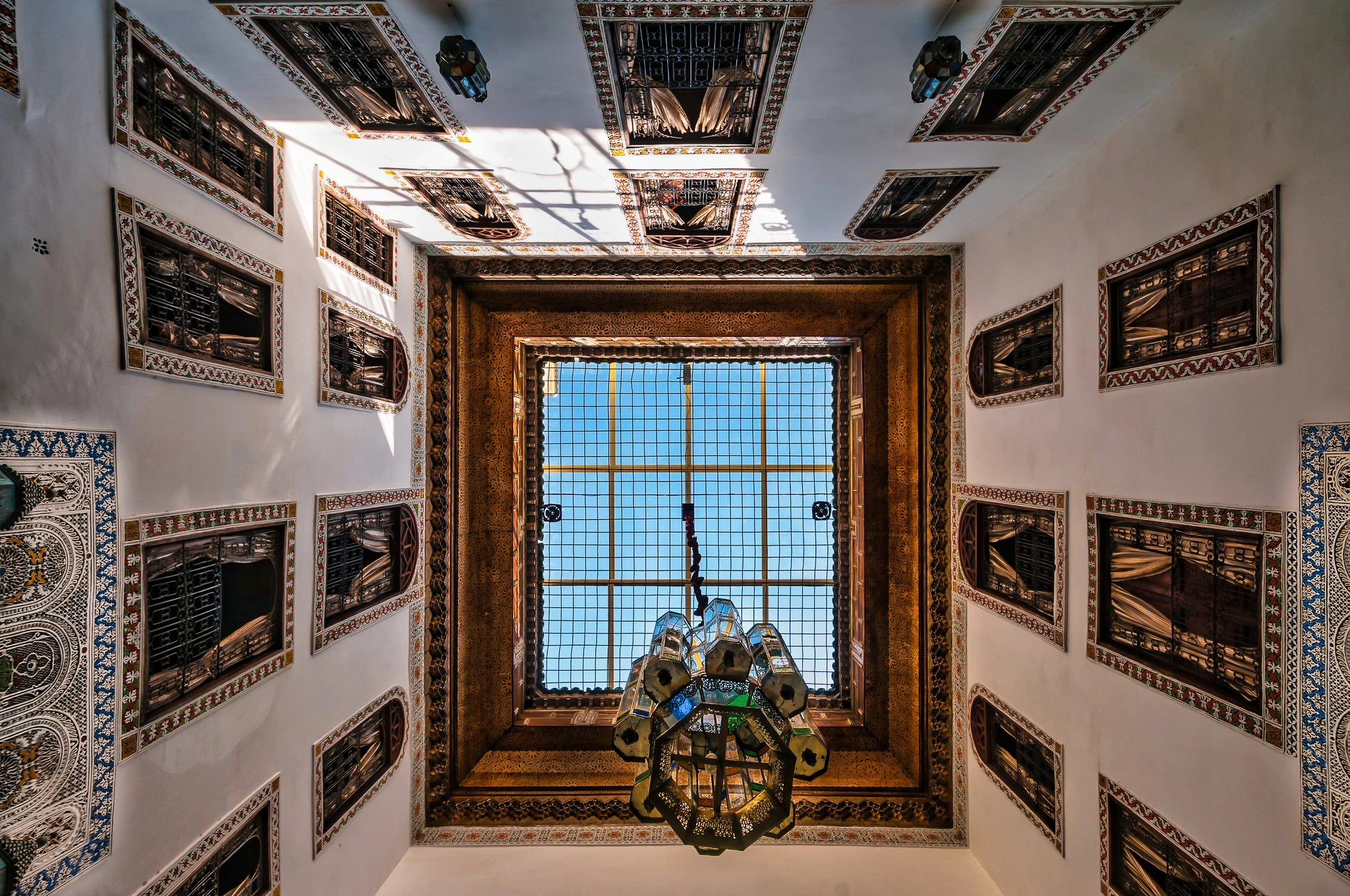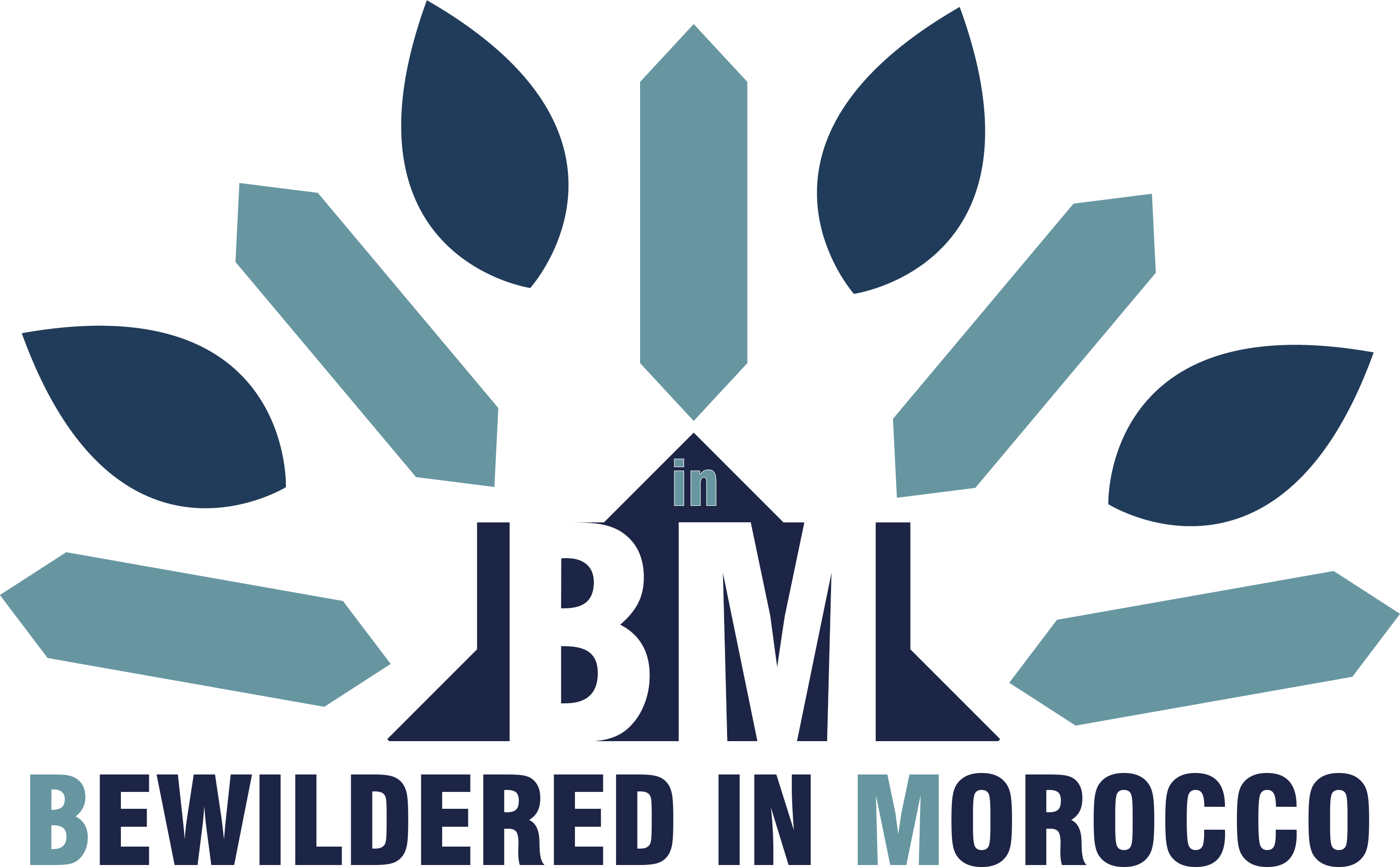Ever wondered why every beautiful Moroccan riad has that stunning central courtyard? Join me as I unveil the genius behind this traditional architectural feature and discover why it's the true heart of Moroccan homes.

You know that feeling when you've been wandering through the hot, narrow streets of a Moroccan medina—the noise, the colors, the beautiful chaos of it all—and then you step through a heavy wooden door into a riad? That sudden hush, the drop in temperature, the gentle sound of water, and that first glimpse of a beautiful open courtyard surrounded by ornate balconies?
That's the magic of the riad patio, and it's no accident.
Recently, I came across a fascinating video that explained exactly why these central courtyards exist in traditional Moroccan homes, and I couldn't wait to share these insights with you. As someone who's spent countless afternoons lounging in these peaceful spaces, sipping mint tea and watching the play of light through ornate latticework, learning about their clever design made me appreciate them even more.
The Hidden Purpose of Riad Patios in Moroccan Architecture
You might think these gorgeous courtyards are just for show—but they're actually brilliant solutions to everyday challenges of Moroccan life. The video I watched opened my eyes to just how practical these stunning spaces really are.
Privacy in Dense Urban Settings
If you've ever walked through a medina, you'll notice most traditional homes present tall, simple walls to the street, with few if any windows. This isn't just an aesthetic choice!
Historically, Moroccan homes were designed to be "fermées sur l'extérieur" (closed off from the outside). This deliberate design choice served a crucial cultural purpose: preserving family privacy. In the tight-knit communities of the medina, where buildings stand shoulder to shoulder and alleys are barely wide enough for two people to pass, privacy becomes precious.
I remember my first time staying in a riad in Fez. From the busy market streets filled with vendors and shoppers, I turned down a quiet alley and through an unassuming door. The transformation was instant—from public chaos to private sanctuary in a single step. It's a brilliant way to create separate worlds.
Nature's Air Conditioning
The second genius reason for the enclosed design with central patios? Heat management!
Morocco's climate can be intensely hot, especially in cities like Marrakech where summer temperatures regularly climb above 40°C (104°F). Before electricity and modern cooling systems, Moroccan architecture had to address this challenge naturally.
The central patio "permettait de rafraîchir naturellement l'air" (allowed the air to be naturally cooled). It creates a microclimate within the home that circulates air and maintains a comfortable temperature. The high walls block direct sunlight, while the open-top courtyard allows hot air to rise and escape, drawing in cooler air from shaded areas.
I've experienced this natural cooling effect firsthand. Even on scorching summer days, stepping into a traditional riad feels like walking into gentle air conditioning. The temperature difference can be dramatic—sometimes 10 degrees cooler than the street outside!
The Spiritual Center: Water in the Riad Patio
One element you'll notice in almost every riad patio is water—usually in the form of a central fountain or small pool. This isn't just a decorative feature.
As the video explained, "Il y a une fontaine au milieu d'un Riad avec de l'eau" (There's a fountain in the middle of a Riad with water). In Morocco, where much of the country borders desert regions, water is extraordinarily precious. The fountain at the heart of the home "symbolise source de vie et surtout le bien-être" (symbolizes the source of life and, above all, well-being).
This symbolism runs deep in Moroccan culture. Water represents prosperity, life, and purification. Placing it at the center of the home reflects its central importance to life itself.
I'll never forget sitting beside the fountain in a riad in Marrakech at dusk, listening to the call to prayer echo across the city while the gentle splashing of water created a meditative soundtrack. It's in moments like these you truly understand why water holds such spiritual significance in this culture.
A Peaceful Living Space
Perhaps the most immediately noticeable benefit of the riad patio is the "espace de vie paisible" (peaceful living space) it creates.
The contrast between the lively, sometimes overwhelming energy of the medina streets and the serene atmosphere of the riad interior is striking. The courtyard becomes the calm heart of the home—a place for family gatherings, quiet contemplation, or entertaining guests.
The patio is usually enhanced with potted plants, comfortable seating areas, and sometimes ornate tile work on the floors and walls. These elements combine to create a multisensory experience of tranquility. The sound of water, the scent of flowering plants, the cool touch of tiled surfaces, and the visual beauty of traditional craftsmanship all contribute to a deeply calming environment.
During one stay in Essaouira, I spent an entire afternoon just sitting in the riad's courtyard, watching light patterns shift across intricately carved plaster walls as the sun moved overhead. There's something almost hypnotic about these spaces that invites you to slow down and be present.
The Enduring Charm of the Riad Patio
The video concluded by highlighting that this unique architectural feature is "ce qui donne tant de charme au Riad" (what gives the Riad so much charm). It's precisely this combination of beauty, functionality, cultural significance, and atmospheric quality that makes riads "ultra recherchés par les investisseurs" (highly sought after by investors) and beloved by travelers.
Modern riads often complement the traditional courtyard with rooftop terraces, offering both the intimate central patio experience and panoramic views of the city. This blend of historical design and contemporary comforts makes them particularly appealing.
I've stayed in sleek modern hotels all over Morocco, but nothing compares to the authentic experience of a traditional riad with its central patio. There's something about waking up and stepping out into that private courtyard, perhaps enjoying breakfast beneath an orange tree, that connects you to centuries of Moroccan daily life.
Experiencing Riad Patios for Yourself
If you're planning a trip to Morocco, I strongly recommend choosing a riad for at least part of your stay. These accommodations range from simple guest houses to luxurious boutique hotels, but all share the distinctive central courtyard that makes them special.
The best way to appreciate the genius of the riad patio is to experience how it transforms throughout the day:
- Morning: Watch how soft light filters down into the courtyard, often creating beautiful patterns through latticework or plants
- Midday: Feel the natural cooling effect at work when the outside streets are at their hottest
- Evening: Enjoy the magical atmosphere as lanterns and candles illuminate the space
Take time to sit quietly in the patio at different hours, perhaps with a book or journal, and simply absorb the peaceful energy these spaces create. Notice how the sounds of the medina seem distant, yet you're right in the heart of the old city.
Reflections on Riad Wisdom
Learning about the thoughtful design principles behind riad patios has given me an even deeper appreciation for Moroccan traditional architecture. These aren't just beautiful spaces—they represent centuries of accumulated wisdom about living comfortably in a particular climate and cultural context.
In an age of energy-intensive building designs, there's something profound about these structures that work with nature rather than against it. The riad patio demonstrates how intelligent design can create comfortable living spaces without massive resource consumption.
Whenever I stay in a riad now, I find myself noticing all the elements working together: the high walls providing privacy and shade, the open courtyard creating natural ventilation, the fountain cooling and humidifying the air, the plants adding oxygen and beauty. It's a perfect system, refined over generations.
Have You Experienced a Riad Patio?
Have you ever stayed in a Moroccan riad? What was your experience of the central patio space? Did you notice the temperature difference between the streets and the interior? I'd love to hear your stories and impressions in the comments below!
Or if you're planning a trip to Morocco and have questions about finding the perfect riad experience, drop me a line. I'm always happy to share recommendations based on my stays in different cities.
Until next time, may your travels be filled with beautiful discoveries—both outside in the bustling markets and inside the tranquil courtyards of Morocco's hidden riads.
